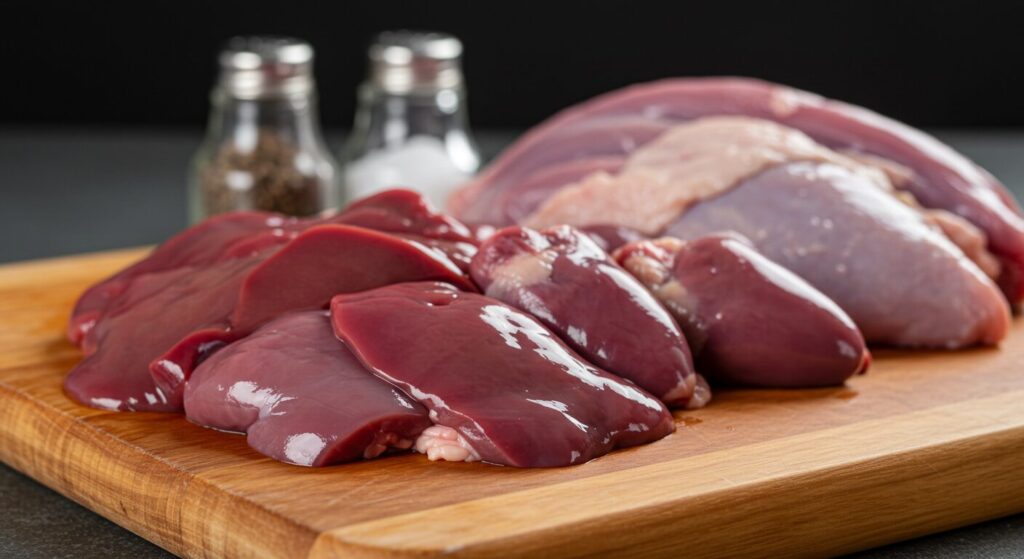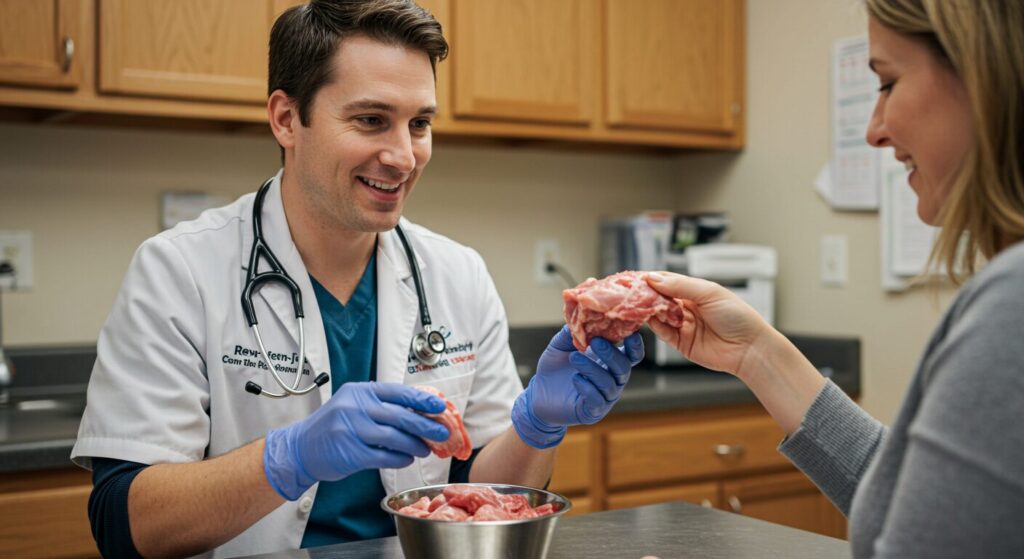Can My Dog Eat Raw Turkey Giblets?
Yes, dogs can eat raw turkey giblets, but they must be fresh and properly handled to avoid bacterial contamination. These organs including the liver, heart, gizzard, and kidneys are packed with essential nutrients that benefit your dog’s health. However, there are some risks and precautions to consider, which we’ll discuss in detail below.

What Are Turkey Giblets?
Turkey giblets refer to the edible internal organs of a turkey. They typically include:
- Liver: High in vitamin A, iron, and essential fatty acids.
- Heart: Rich in taurine, an amino acid crucial for heart health.
- Gizzard: A muscle organ that aids digestion and is full of protein.
- Kidneys: A source of B vitamins and minerals.
These organs are nutrient-dense and can be a great addition to a dog’s diet when fed correctly.
Are Raw Turkey Giblets Safe for Dogs?
Raw turkey giblets are generally safe for dogs, but they come with some risks. The primary concerns are bacterial contamination and portion control.

Potential Risks:
- Salmonella and Campylobacter: Raw poultry can carry bacteria that may cause foodborne illnesses.
- Overfeeding Organs: Too much liver can lead to vitamin A toxicity, causing bone problems and muscle weakness.
- Choking Hazard: The heart and gizzard can be tough; cutting them into smaller pieces is advisable.
To minimize risks, ensure the giblets are fresh and sourced from a reliable supplier. You can also freeze them for a few days before feeding to reduce bacterial load.

Nutritional Benefits of Turkey Giblets for Dogs
Turkey giblets are a powerhouse of essential nutrients that support overall canine health.
Key Nutrients in Turkey Giblets:
- Protein: Supports muscle development and energy.
- Iron: Crucial for red blood cell production.
- Taurine: Supports heart function and eye health.
- B Vitamins: Enhance metabolism and nerve function.
Compared to processed dog food, giblets provide natural and bioavailable nutrients, making them an excellent supplement.

For more on healthy dog diets, check out this guide to the best dog food.
How to Safely Feed Raw Turkey Giblets to Dogs
Follow these guidelines to ensure safety and proper nutrition:
Preparation Tips:
- Wash Thoroughly: Rinse the giblets to remove any surface bacteria.
- Cut Into Small Pieces: This prevents choking, especially for small dogs.
- Portion Properly: Giblets should not exceed 10% of your dog’s daily food intake.
- Monitor Your Dog: Watch for digestive issues or allergies when introducing new food.
If your dog is sensitive to raw food, consider lightly cooking the giblets to make digestion easier.
Can Puppies Eat Raw Turkey Giblets?
Yes, but in moderation and under supervision. Puppies have developing digestive systems and are more susceptible to bacterial infections. It’s best to:
- Start with small portions.
- Monitor for diarrhea or upset stomach.
- Introduce one organ at a time.
If you’re feeding a homemade diet, consult a vet to ensure nutritional balance. Check out this guide on vet-approved homemade dog food.
Raw vs. Cooked Turkey Giblets: Which Is Better?
Both raw and cooked turkey giblets have their pros and cons.
Raw Giblets:
- Retain more natural nutrients.
- Support a raw diet plan.
- Higher risk of bacterial contamination.
Cooked Giblets:
- Kills bacteria, making it safer.
- Easier to digest for sensitive dogs.
- Overcooking can reduce nutrient levels.
If cooking, avoid adding seasonings like salt, garlic, or onions, as they are toxic to dogs.
Signs That Turkey Giblets May Not Be Right for Your Dog
While most dogs tolerate giblets well, some may have sensitivities. Watch for these symptoms:
- Vomiting or diarrhea
- Excessive itching or allergies
- Refusal to eat
If any of these occur, discontinue feeding giblets and consult a vet. Learn about food sensitivities and alternative diets here.
Conclusion: Should You Feed Your Dog Raw Turkey Giblets?
Yes, raw turkey giblets can be a nutritious and safe treat when fed properly. They provide essential nutrients, support overall health, and can be included in a balanced diet. However, always ensure food safety, proper portioning, and close monitoring for any adverse reactions.
Want to explore more about feeding your dog properly? Check out this detailed guide on choosing the best dog food.
Get dog tips & joy! Subscribe to Paw Prints!








